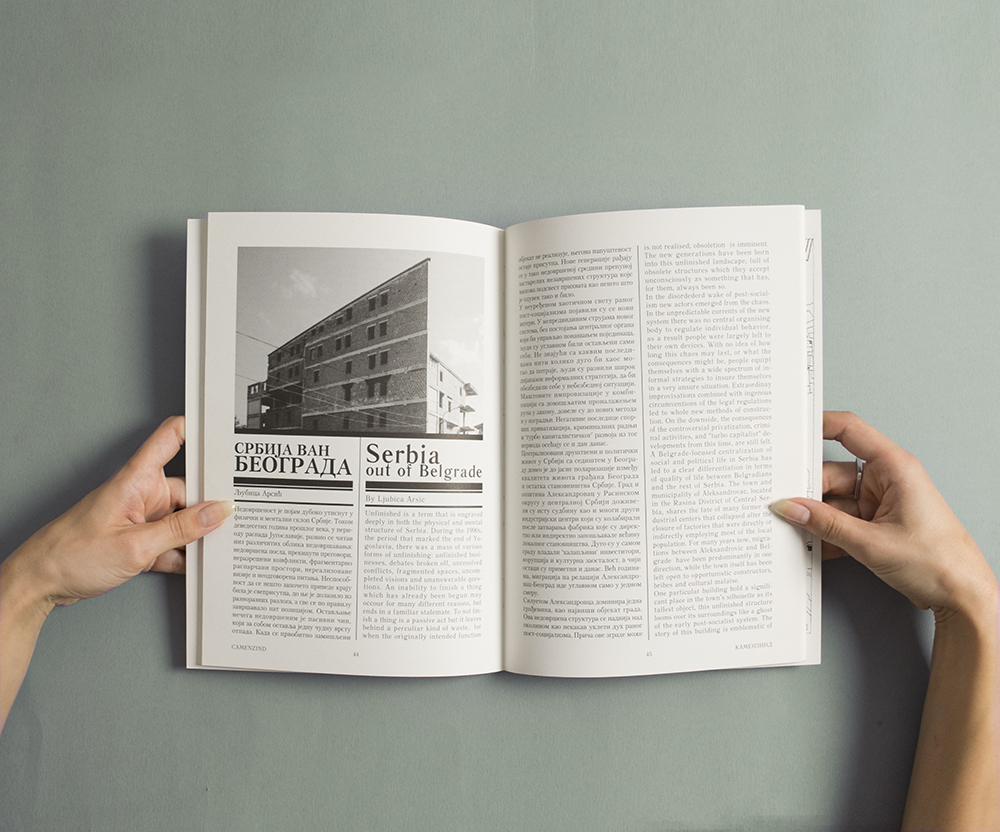Serbia out of Belgrade
Publication / Kamenzind Magazine
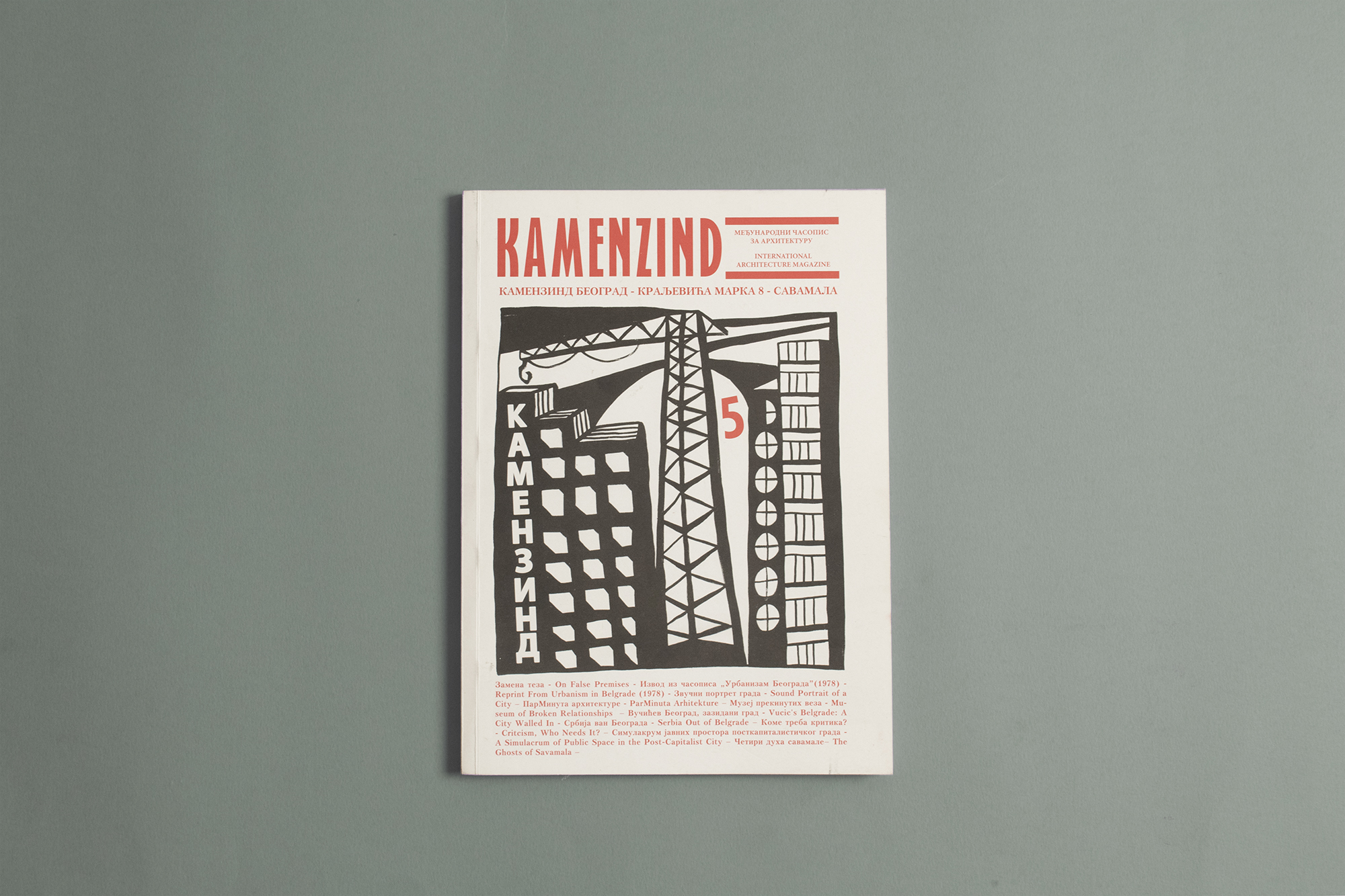
An Article written for The International Architecture Magazine Kamenzind published by Camenzind Belgrade 2014
Credits
Publisher
Author
Ljubica Arsić
Year
2014
ISSN1663-3350
Tekst na srpskom jeziku
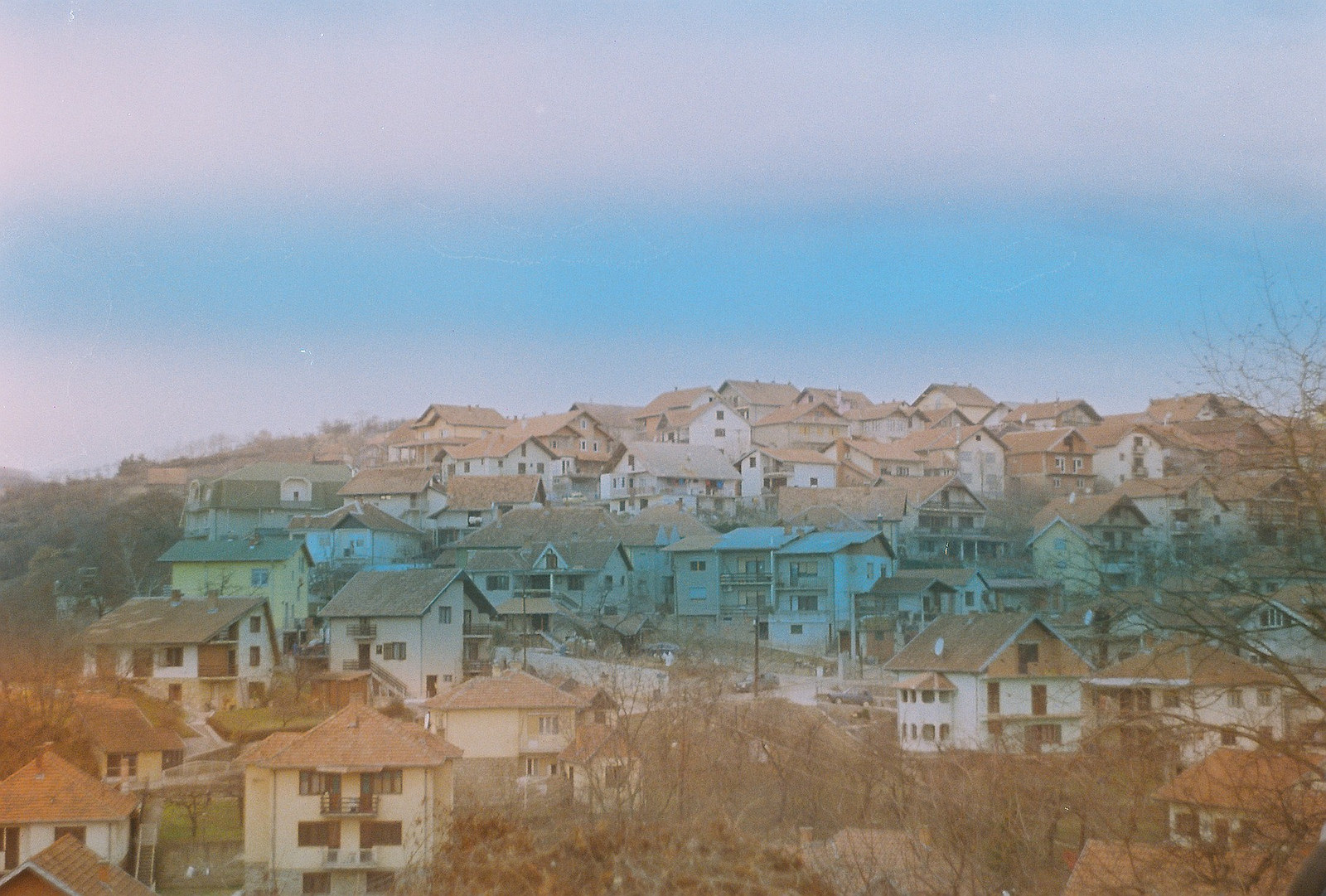
Beyond the Rubble
Unfinished is a term that is engraved deeply in both the physical and mental structure of Serbia.
During the 1990s, the period that marked the end of Yugoslavia there was a mass of various forms of unfinishing: unfinished businesses, debates broken off, unresolved conflicts, fragmented spaces, uncompleted visions and unanswerable questions. An inability to finish a thing which has already been begun may occur for many different reasons, but ends in a familiar stalemate. To not finish a thing is a passive act but it leaves behind a peculiar kind of waste, for when the originally intended function is not realized, obsoletion is imminent. The new generations have been born into this unfinished landscape, full of obsolete structures which they accept unconsciously as something that has, for them, always been so.

Chaos Unleashed
In the disordered wake of post-socialism new actors emerged from the chaos. In the unpredictable currents of the new system there was no central organizing body to regulate individual behavior, as a result people were largely left to their own devices. With no idea of how long this chaos may last, or what the consequences might be, people equipt themselves with a wide spectrum of informal strategies to insure themselves in a very unsure situation. Extraordinary improvisations combined with ingenious circumventions of the legal regulations led to whole new methods of construction. On the downside, the consequences of the controversial privatization, criminal activities, and “turbo capitalist” developments from this time, are still felt.
Contrasting Realities
A Belgrade-focused centralization of social and political life in Serbia has led to a clear differentiation in terms of quality of life between Belgradians and the rest of Serbia. The town and municipality of Aleksandrovac, located in the Rasina District of Central Serbia, shares the fate of many former industrial centers that collapsed after the closure of factories that were directly of indirectly employing most of the local population. For many years now, migration between Aleksandrovac and Belgrade have been predominantly in one direction, while the town itself has been left open to opportunistic constructors, bribes and cultural malaise.
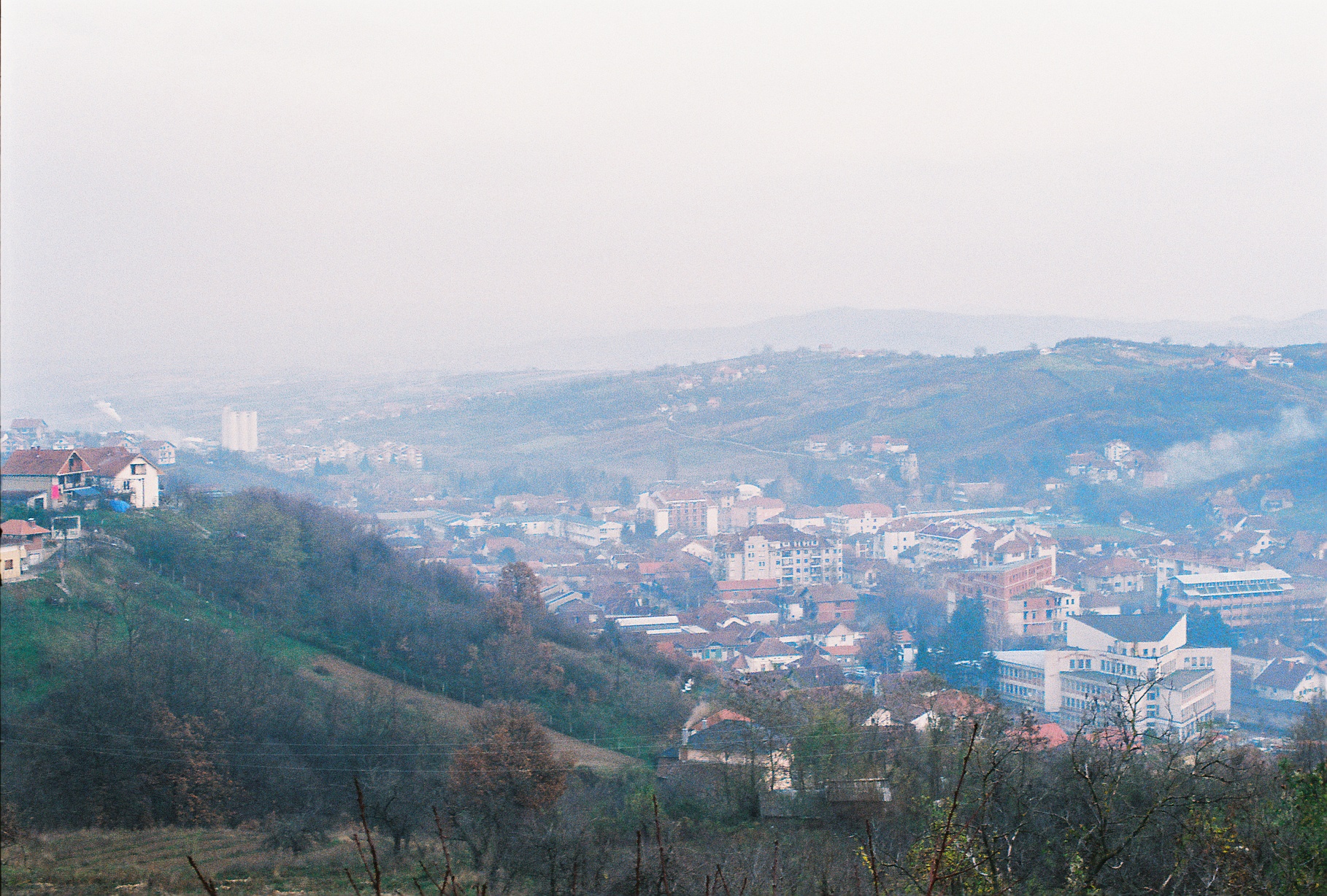
Serbia’s Architectural Ghosts
One particular building holds a significant place in the town’s silhouette as its tallest object, this unfinished structure looms over its surroundings like a ghost of the early post-socialist system. The story of this building is emblematic of much of the architecture across Serbia that has, for various reasons, been left incomplete. Despite the building being at the center of the valley geographically, it is far from being at the center of the town culturally and is the biggest unofficial public toilet in the whole municipality.

The Unresolved Legacy
The city of Aleksandrovac, unable to fund much-needed new municipal facilities, made the decision to give away this land to a private investors. In return, these investors would build a new municipal administration as a part of a planned new business center. The part of the building where the municipal administration is located was complete within two years, but the rest of the complex was never finished. Construction was initially halted 1996 after a quarrel between investors and politicians over the lack of money. This was followed by a court case which found no compromise, and this deadlock was then compounded by the lack of political inclination to finish the previous regime’s “work”.
Over the past twenty years no solution has been found for this object and it feels like it will forever remain in this suspended state.
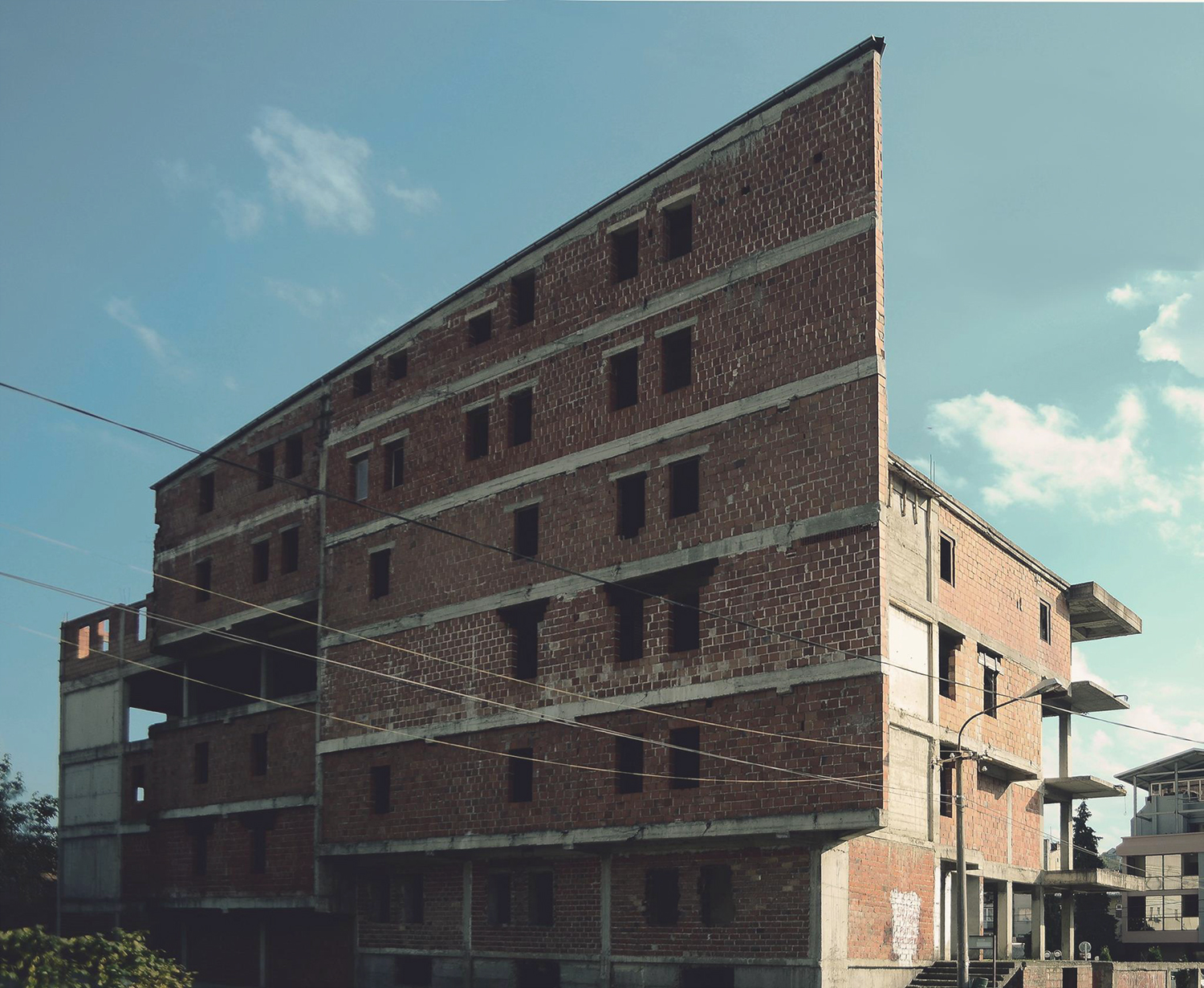
Tales of Mismanagement and Ownership
There are various factors connected to the construction of this building, which made it such a tragi-comic affair. The investor had sold almost all of the shops in the business center Zupa before its construction began, mostly to citizens working abroad. Some of these “shops” were then sold up to three times to different buyers without them knowing it. A few years later, the investor’s company went bankrupt due to a frozen account. A group of buyers then raised a lawsuit against the investor, but in the absence of valid contracts, the case got very complicated. Ten years after it began, the case was closed without resolution. Some of the buyers then tried to organize themselves to finish the building with their own money. Things became complicated further by an illegal extension to the building and the fact that unsold shops fell under the ownership of the state after the liquidation of the company. Because there were so many owners, and politicians who profited from the whole affair, demolition was not an option.
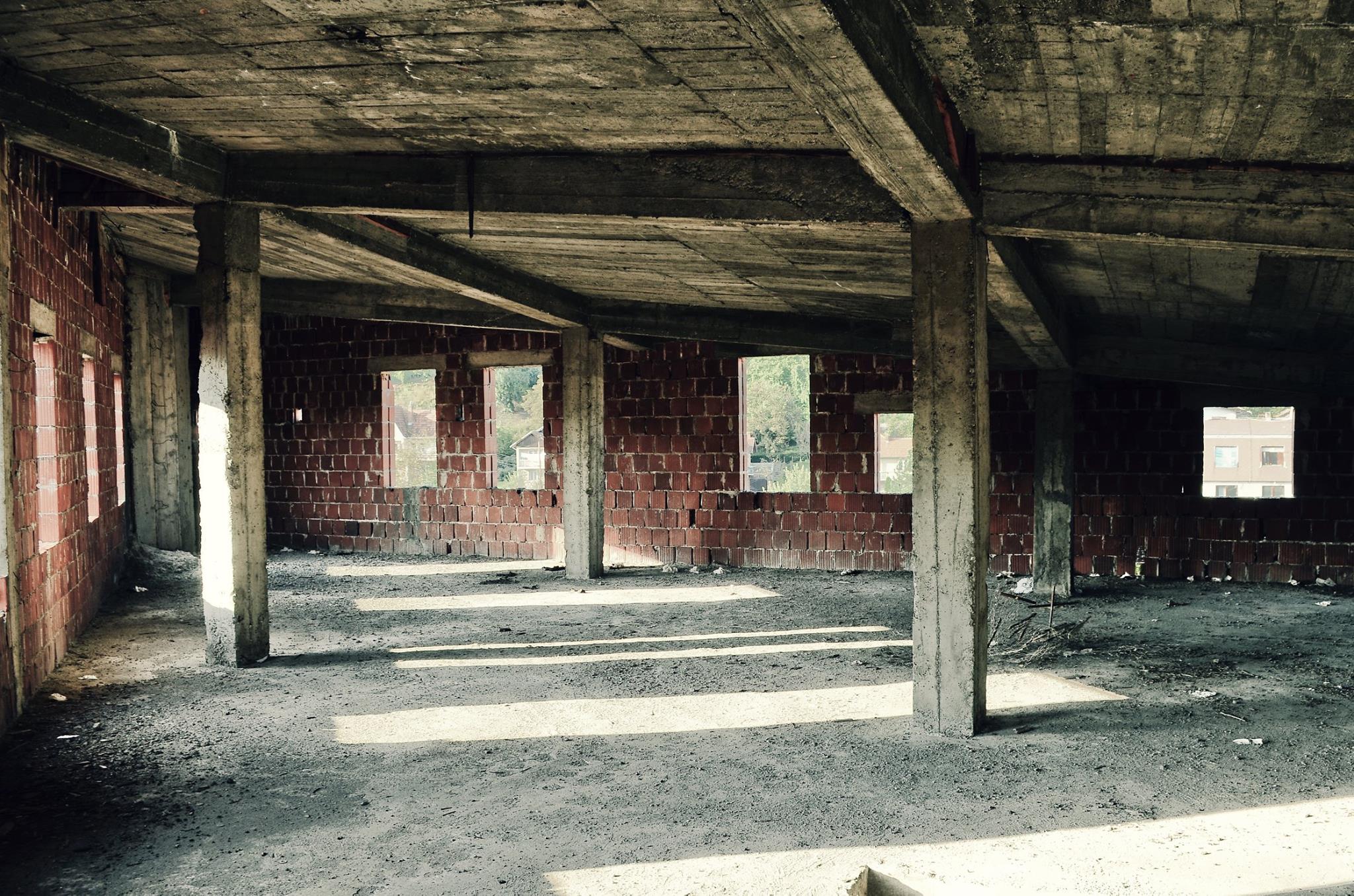
The Playground of Paradox
During the NATO bombing of Yugoslavia, between the sounds of the air raid sirens, children would spend their “peace period” playing their favorite game of “war” using sticks for guns and pine cones for bombs and grenades. During that summer of 1999 this pretend war existed within the real one, and for this game children sought out abandoned structures. This building-site was one of them, so empty and omnius, it was the perfect playground, its dilapidated structures permeated with the tense feeling that something terrible might be just around the corner.
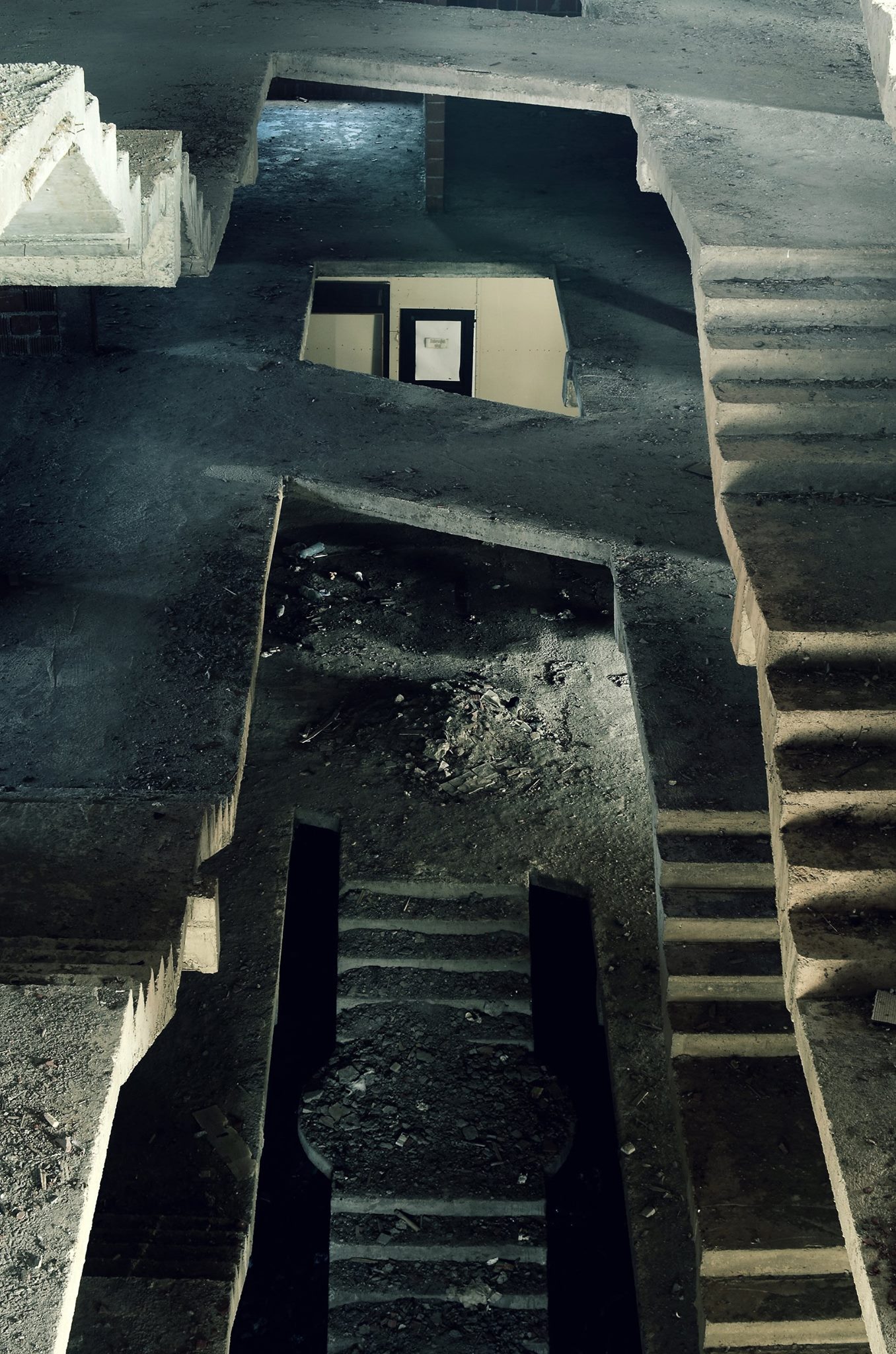
Layers Unveiled: A Building’s Dance with Time
Over the years, layers appeared and disappeared over the building. Several times locals remember the building wrapped in scaffolding, almost like Christo and Jean-Claude-inspired symphony of wraps and unveils. Some kind of perpetual cycle of installing and dismantling this scaffolding created an atmosphere of expectation, each time the cocoon reappeared it created a repeating cycle of uncertainty excitement and disappointment when it was suddenly left naked and unprotected again and at the mercy of weather and thieves.
Brick by brick the building was slowly dismantled during the night and the most probably recycled in local construction projects: development through illegal demolition.
The last layer left is an organic one, consisting mainly of moss, weeds and dandelions sprouting over the structure, returning it slowly to nature.
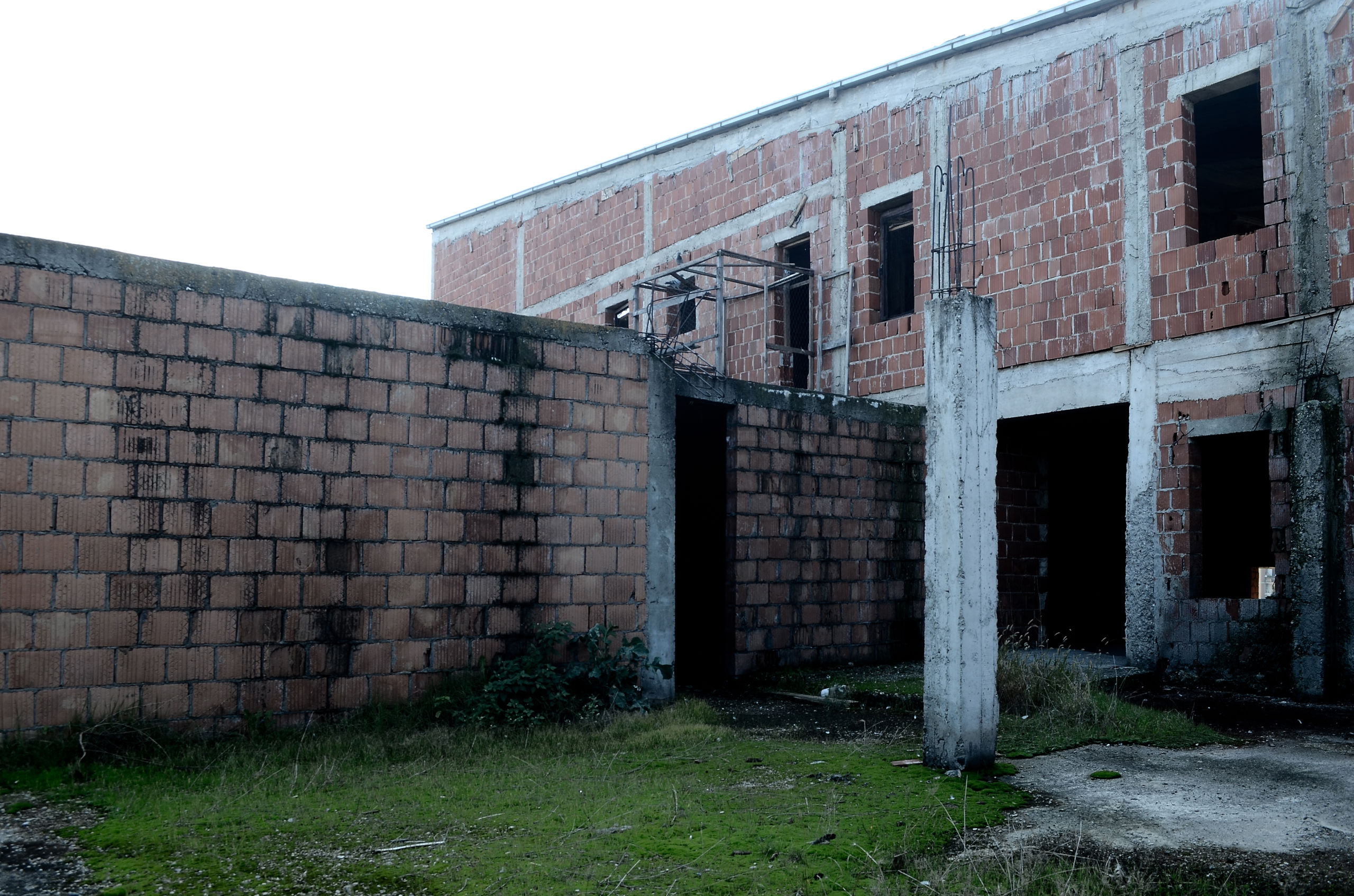
A Ruin Lost in Transition?
It is hard to classify a building-site like this precisely and when it gets officially categorized as a ruin. Walter Benjamin remarks that in ruins: ‘human history is physically merged into the natural setting’, and according to John Ruskin, they have a ‘mediating power, between the old and the new, and between nature and culture’. A ruin is a sort of a mental structure, reminding us about the inevitability of time and causing us to think about past that is gone, but a ruined building-site is about a past that might have been and a future that never took place.
Eternal Construction Site?
Some buildings do exist for years in this cycle of perpetual construction, with work lasting for decades or even centuries. There are many reasons for construction works being halted. When construction stops, and the construction site becomes abandoned, it becomes an eternal construction site. These kinds of ruins present no evocative nostalgic past-life to the visitor. They simply sit in stasis, derelicting over time through neglect, waiting to be finished. For locals is easier to accept this structure as permanently ‘ongoing’ than as readily ‘abandoned’ and already a ‘ruin’.
A Monument to Instability?
This building is also something of a monument, even though it has no particular historical importance and it is not considered as an example of important architectural and/or cultural heritage, it has become a ‘monument to instability’, commemorating the death of a regime. If monuments are created to preserve meaning and to prevent the fading of memory, can they still be called monuments if no one actually wants to keep these memories alive?
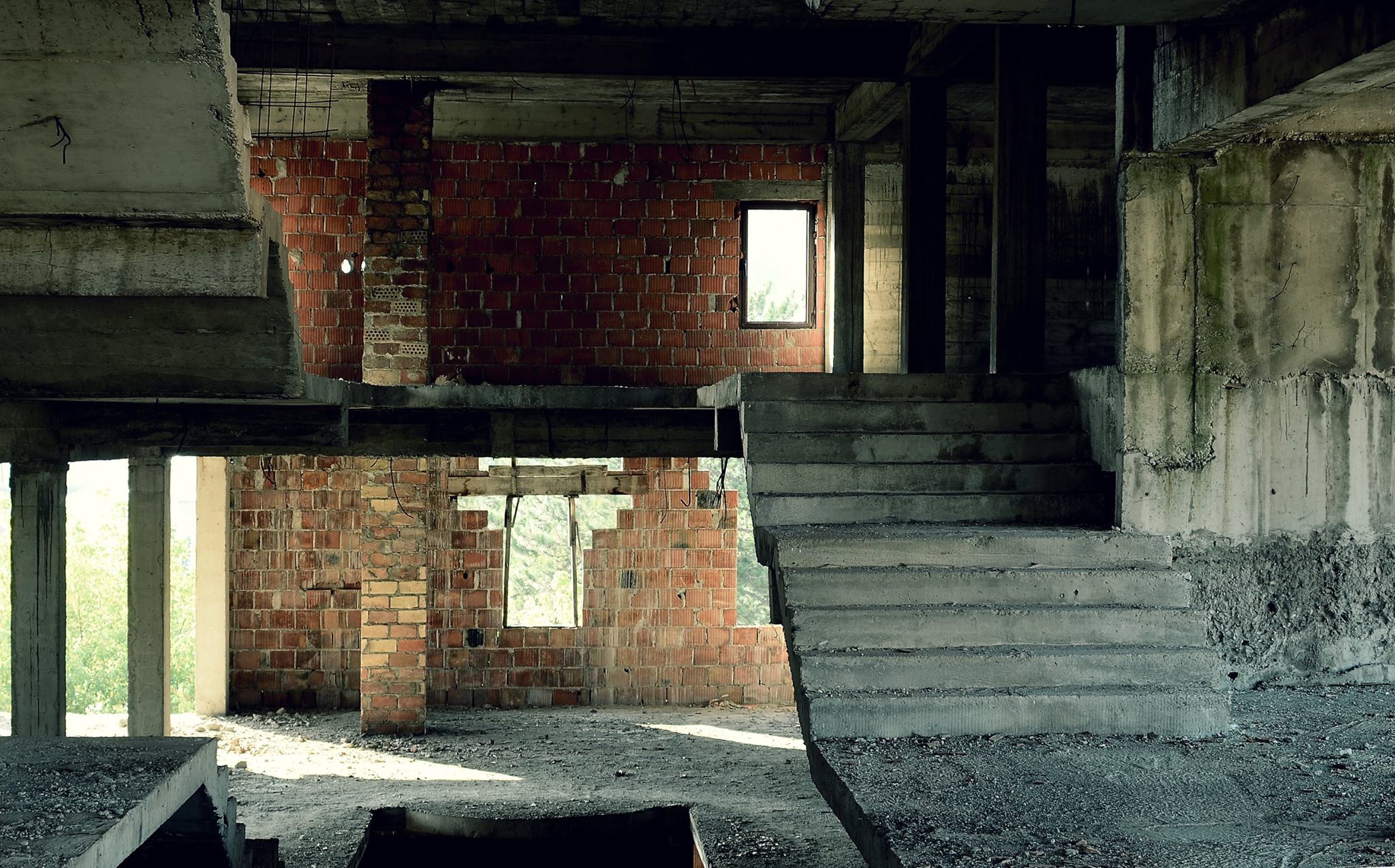
Nostalgia for an Unrealized Future
The unfinished object can communicate with a different purpose, a testament to failed intentions. Even though people find this building very alien, it reality it is very human. It is a human mistake on a monumental scale. What occurs, in this case, is an ‘architectural hangover’, something we regret after it is already built. The incomplete building in Aleksandrovac captures a transitional process in Serbian society in its very stasis.
There is something evocative and nostalgic when man moves out of a building and nature begins to take it over, but a ruined building-site which was never even inhabited by man raises different emotions. Haunted not by history, but by a history that never happened, or a future put permanently on hold.

Beyond Neglect
The narrative of this building encapsulated the wider story of Central Serbia. Just like this building, provincial cities, towns and villages are decaying, full of paused developments left fragmented by different regimes, ideologies and waves of emigration. While most perceive this decay as a problem rooted in the past, some recognize the untapped potential within these broken spaces, hindered from realization. The whole region is in a deadlock, where ignoring the problem seems like the only strategy. The unfinished can find a new purpose with a change in the legal framework that will allow it to be finally recognized as something with a lot of potential, for in the unfinished there is always a space for the imagination to play.
With a cunning strategy, we shall fuel progress by raising awareness, reshaping policies, fostering powerful partnerships, igniting pilot architectural projects and assembling creative task forces. Together, we can rewrite the script of neglect, transforming this forgotten structure into dazzling community meeting point that defy expectations.
